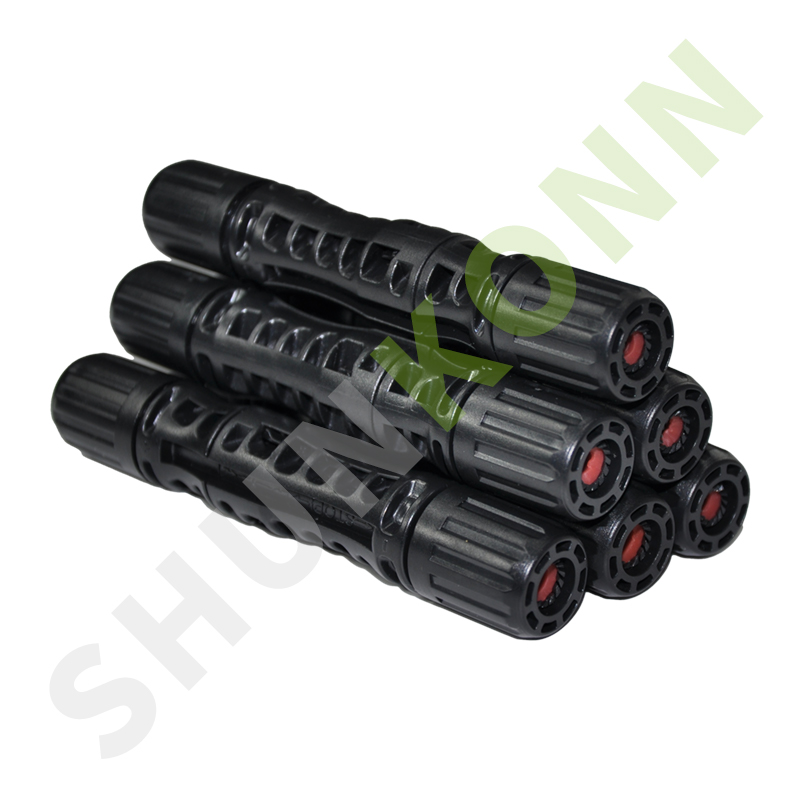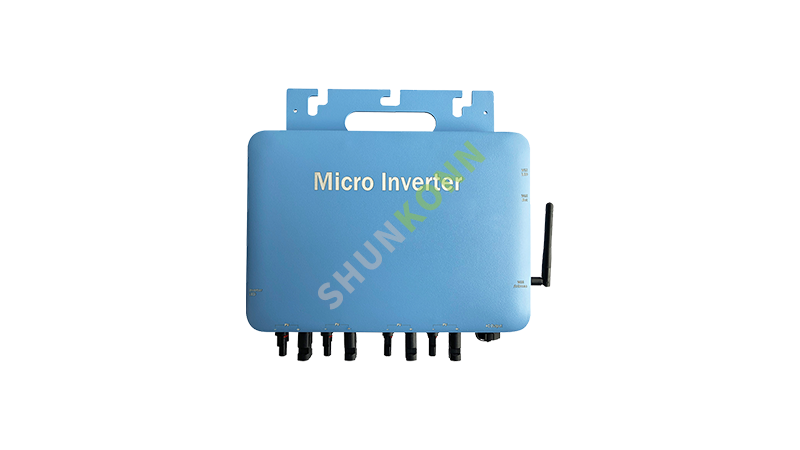Solar PV connectors play a key role in the wiring of solar arrays. They are designed, if installed correctly, to provide high-voltage, high-current, low-resistance DC connections, with waterproof, heat-resistant, UV-resistant housing and a lifespan of up to 25 years or more. In addition, their snap-on connection technology speeds up the installation of solar arrays. However, PV connectors are often the source of array failures.
A study that looked at the causes of thermal failures in photovoltaic arrays found that photovoltaic connectors and crimpers were the single largest cause of DC wire failures.

Shunkonn 1000V solar photovoltaic connector
The failure of photovoltaic connectors can be divided into two aspects:
Incompatibility issues and connector wiring issues. Factory-installed connectors on the back of PV modules are usually not the main source of problems, and most of these failures are related to field wiring. However, there may be problems with field-installed PV connectors such as those for wiring the end of the home cluster used with the cluster and other central inverters.
Incompatibility problems are often caused by the fit of PV connectors from different manufacturers. While many connectors are considered "compatible," there is no uniform industry standard for connector design. Optimal electrical connections cannot be guaranteed due to differences in design tolerances, crimming-tool requirements, and contact and housing materials. In addition, while all PV connectors should be tested to UL 6703, this standard does not include the fitting of connectors from different manufacturers unless specifically tested, which is rarely done. Some manufacturers caution against connecting connectors of different brands.
Most PV connectors use crimped contacts. Whether factory or field installed, these connectors require manufacturer recommended crimple tools and correct assembly for trouble-free installation. The crimple tool calibration requirements and crimple die restrictions must be complied with to achieve a trougl-free installation over the service life of the array. There are now also new tool-free PV connectors. These connectors eliminate tooling and assembly requirements, and they use spring contacts that are resistant to high temperature and vibration for wire connections.

Shunkonn 1500V solar photovoltaic connector
The challenge in resolving PV connector failures is to ensure proper installation during the initial wiring of the PV array. Some of the best practices that can be used to achieve this are:
In addition to the challenge of proper assembly of photovoltaic connectors, there is also the problem of incompatibility of photovoltaic connectors. Best practices in this regard include always specifying the same brand of field connectors as those offered by the PV module manufacturer. This includes the use of micro inverters and optimizers. Some of these manufacturers have made this issue easier in some cases by offering a choice of PV connector brands on their equipment.
Using PV connectors from the same manufacturer, proper training, recommended crimping tools, or using tool-free springs to contact PV connectors can help to minimize the impact of connector failures.

If you have more questions or need more information, please contact us and our professional team will be happy to support and answer you.
You can also contact us directly in the following ways: visit, telephone, email